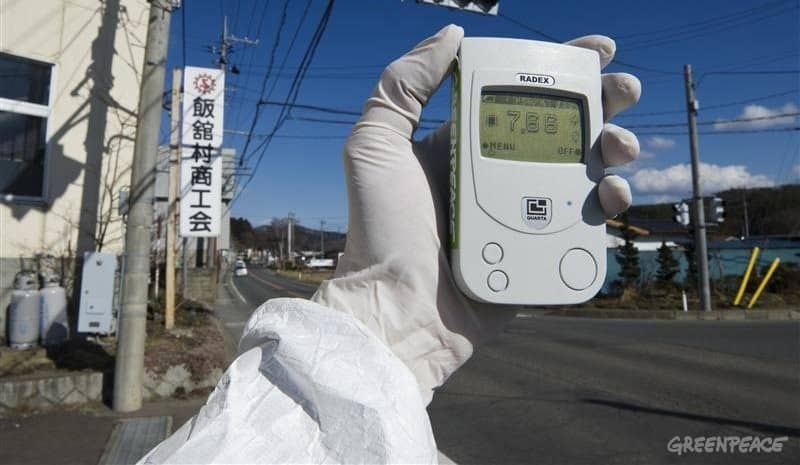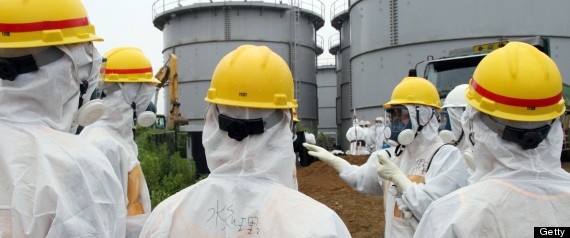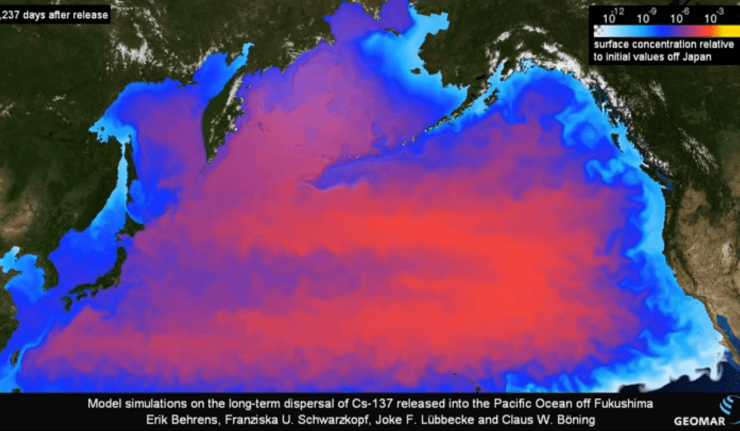Fukushima Radiation Hits the US
The aftershocks of the Fukushima radiation disaster are soon to hit the Pacific Coast of North America. Japan’s Nuclear Regulation Authority announced Wednesday, August 28, 2013 that the devastated Fukushima Daiichi nuclear power plant has been experiencing a serious radioactive water leak from a storage tank. As dangerously high levels of radiation are spilling into the ocean, the toxic incident is being reclassified from a Level 1 to a Level 3 on the International Nuclear and Radiological Event Scale. According to U.S. Nuclear Regulatory Commission spokesman Scott Burnell, the rating is based upon the elevated exposure risk the leak presents to cleanup workers inside the plant.
However, the Japanese government has been slow to act on the hazards the plant has presented since the tsunami hit in March of 2011, which caused 160,000 people to evacuate the area, radioactive contamination of the air, sea, and food, and three reactors to have fuel-rod meltdowns. Reuters reports that the Toyko Electric Power Company (Tepco) said Wednesday that an inspection following the recent leakage recorded “high radiation readings – 100 millisieverts per hour and 70 millisieverts per hour,” meaning that within an hour of exposure the levels of radiation are that which are allowed over a five-year period for the average nuclear plant worker.
Aside from the recently discovered leaks, atmospheric radiation particles were detected on the west coast of the United States within a few days after the initial crisis in 2011. However, an ocean current called the “North Pacific Gyre” is pushing Japanese radiation into west coast waters, and pockets or streams of highly concentrated radiation are expected to hit the US by the beginning of 2014. Dr. Erik van Sebille, an author of a paper published in the journal of Deep Sea Research-1 said, “Observers on the west coast of the United States will be able to see a measurable increase in radioactive material three years after the event.”
The University of Hawaii’s International Pacific Research Center created a timeline graphic that projects signs of dispersed radiation hitting the US within 2.3 years of the initial disaster, and a full blast to the entire west coast by 3.2 years. Fisherman in May 2012 reported noticing elevated levels of radiation in Bluefin tuna off the California coast. The National Academy of Sciences said, “the radiation levels were ten times the normal level of that measured in previous fish.” These tuna were likely born near Japan during the Fukushima disaster and migrated to the eastern Pacific shortly after, thereby transporting radiation faster than ocean currents or tides.
Scientists from the National Oceanic and Atmospheric Administation’s (NOAA) Pacific Marine Environmental Laboratory and three scientists from the GEOMAR Research Center for Marine Geosciences said radiation could be 10 times higher on the west coast than it was in Japan. The paper explains, “the tracer cloud continuously expands laterally, with maximum concentrations in its central part heading east…the main tracer patch reaches the coastal waters of North America after 5–6 years, with maximum relative concentrations ( > 1 × 10−4) covering a broad swath of the eastern North Pacific between Vancouver Island and Baja California.”
To make matters worse, Forbes reported in April 2013 that the EPA director, Bob Perciasepe, signed a revised version of the Protective Action Guide (PAG) for radiological incidents. This revision, critics say, “radically relaxes the safety guidelines agencies follow in the wake of a nuclear reactor meltdown.” Advocacy director of the Public Employee for Environmental Responsibility (PEER), Kirsten Stade, said in a press release, “the PAGs allow long-term public exposure to radiation…as high as 2,000 millirems. This would, in effect, increase a longstanding 1 in 10,000 person cancer rate to a rate of 1 in 23 persons exposed over a 30-year period.”
California has already begun experiencing effects in the wake of the Fukuskima disaster. Outside of contaminated air, rainfall, debris, and tuna, MSN News reports that the nonprofit organization, Radiation and Public Health Project (RPHP), published a study in March 2013 that indicated a 28 percent increase in west coast babies born with underactive thyroid glands just nine months after the Fukushima disaster. Executive director for RPHP, Joseph Mangano, also said that the “American Medical Association has already called for the testing of all fish sold in the US for radiation contamination, but the FDA has so far resisted.”
As the FDA and EPA continue to raise limits on contaminant levels in air, soil, water, and food for public health safety, Americans need to be aware of the radioactive dangers stemming from the Fukushima disaster. Some precautions taken to avoid harmful substances from interfering with your health include ingesting iodine pills, abstaining from eating wild ocean fish, and swimming in the Pacific Ocean. As drastic as this may seem, the more preventative care to be aware of, the better chance you stand at not being affected by this nuclear pollution.












